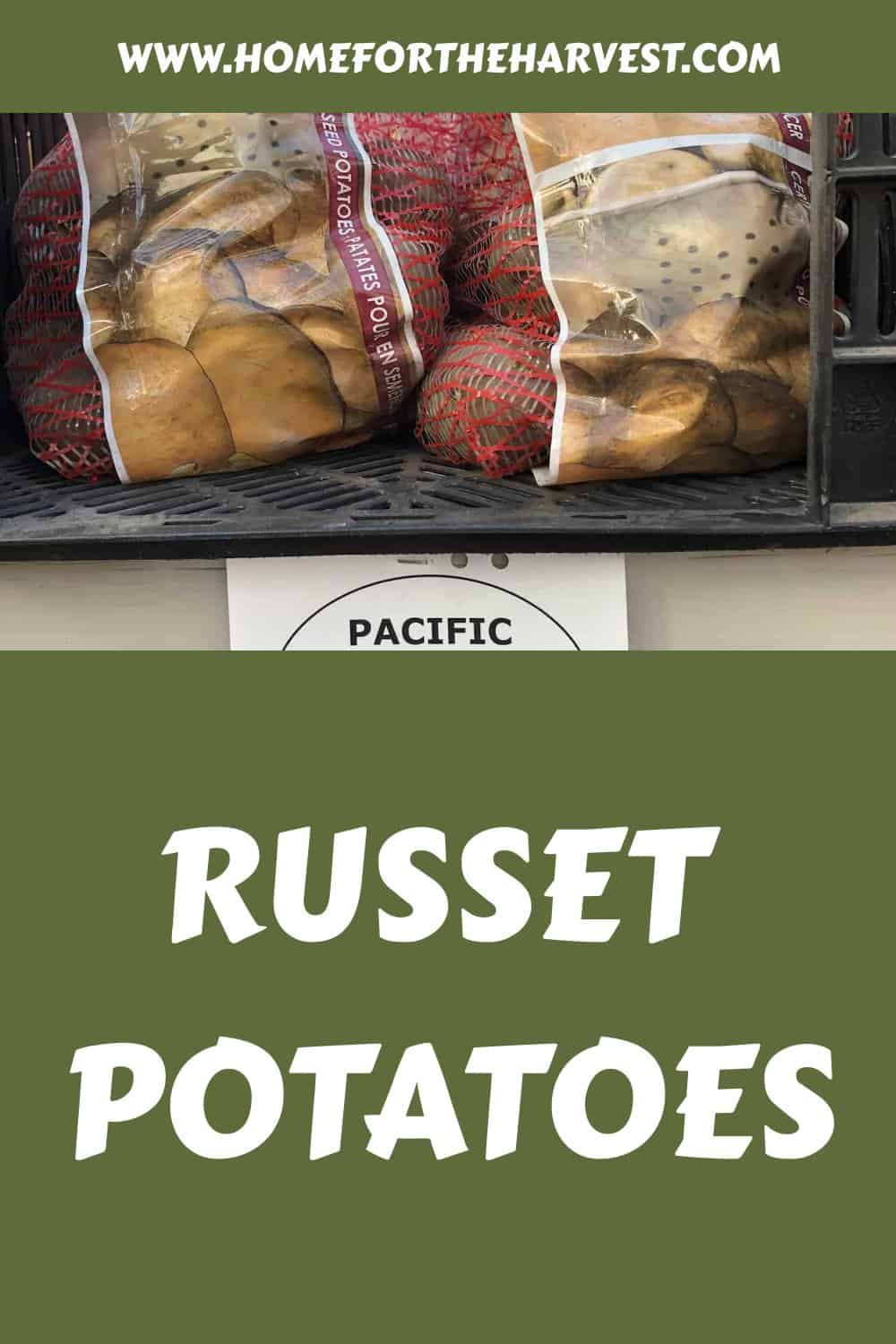Russet potatoes are varieties that have thick rough brown skin. They also have white flesh and a fluffy dry texture when cooked. Russet potatoes are excellent for making baked or mashed potatoes. Most russets take about 95 days to mature after planting in the garden. The most popular varieties of russet potato include the Burbank Russet, Caribou Russet, Pacific Russet, Innovator Russet, and Norkotah Russet.
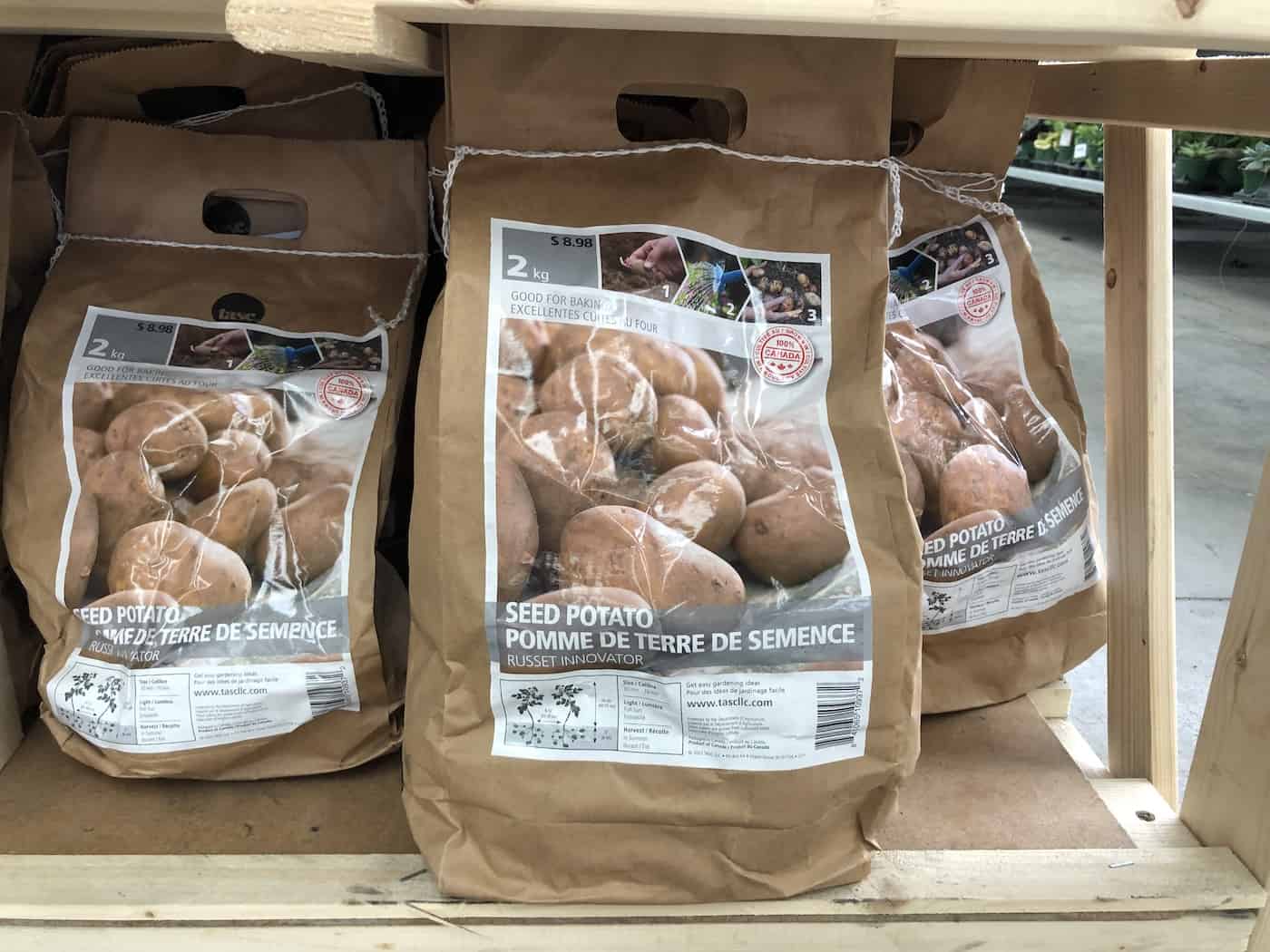
Russet potato basics
If you are looking for a hearty and versatile potato variety, russet potatoes should be at the top of your list. These large, oblong Idaho-style potatoes are known for their thick rough skin and fluffy texture when cooked, making them perfect for baking or mashing.
Russet potatoes are also an excellent choice for boiling, and their dryer flesh means they will absorb less water than other potato varieties. This also makes russet potatoes ideal for use in soups or stews.
When choosing russet potatoes at the grocery store, look for ones that are free of blemishes or green spots. These potatoes should also be firm to the touch, with no signs of wrinkling or sprouting.
Buying Russet seed potatoes
Russet potatoes are grown from seed potatoes. Seed potatoes are small potato tubers that have been specifically grown for planting and selected to be healthy and disease-free. They are also not treated with sprout inhibitors like grocery store potatoes.
To grow your own potatoes, you can purchase russet seed potatoes at a local garden center or online from many of the larger American seed companies. Here are some different varieties of russet-type seed potatoes:
- Burbank Russet
- Rio Grande Russet
- Caribou Russet
- Norkotah Russet
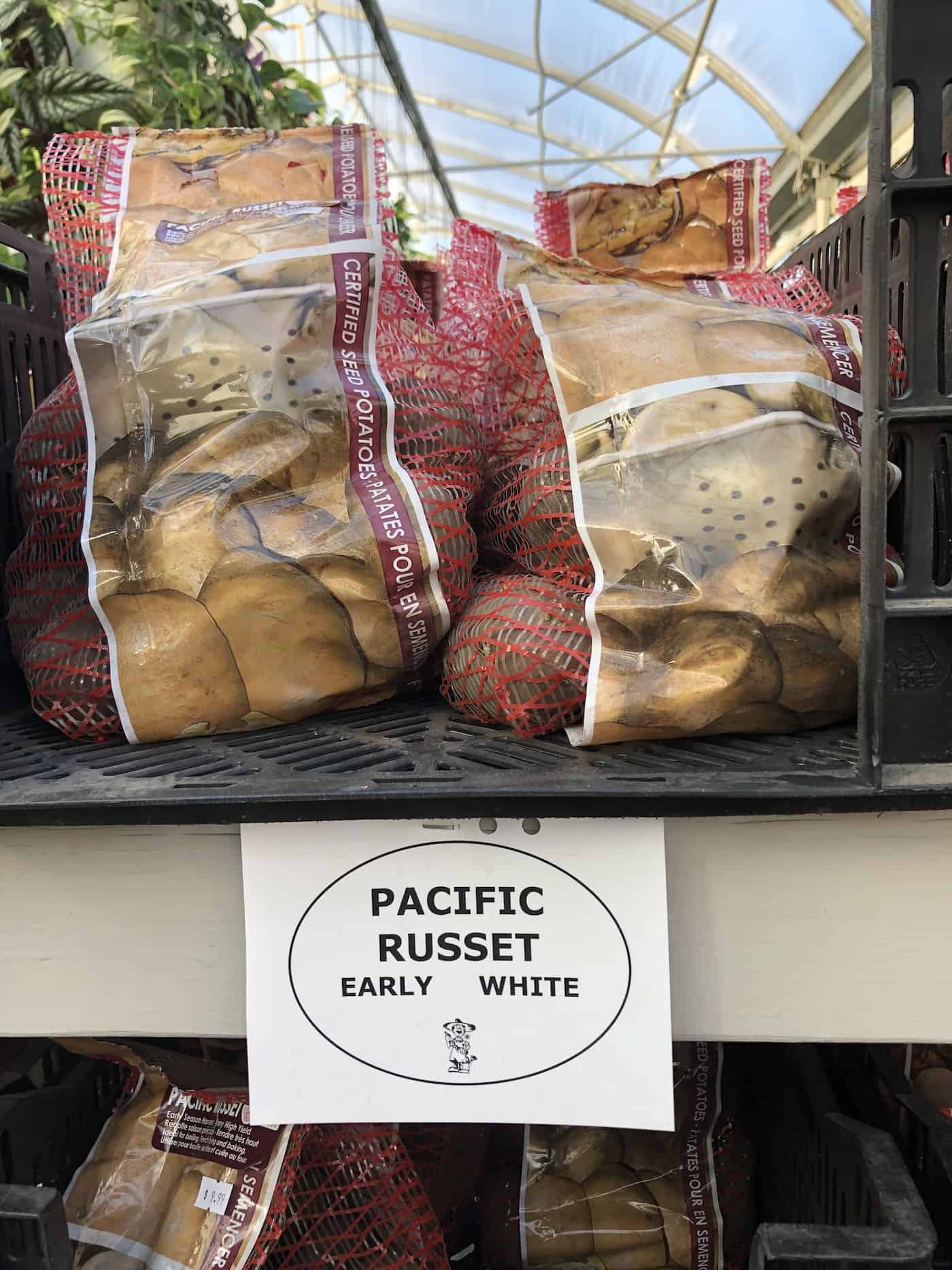
When to plant Russet potatoes
Potatoes are most commonly planted 2-4 weeks before your local last frost date. Here is a general guideline by USDA plant hardiness zone:
- Zone 10+: January
- Zone 9: early February
- Zone 8: late February
- Zone 7: early March
- Zone 6: late March
- Zone 5: early April
- Zone 4: late April
- Zone 3: early May
- Zone 2-: late May
If you’re not up to covering the baby plants if there is a late frost, just wait until after the last likely spring frost to plant them.
Preparing Russet seed potatoes for planting
Once you have your seed potatoes, it’s time to prepare them for planting. The process is relatively simple:
1. Cut your seed potatoes into pieces that have 2-3 eyes (sprouts) on each piece.
2. Allow the cut pieces to dry out for a few days, until the cut surface isn’t glistening.
Small seed potatoes (1-2 ounces) are usually planted whole, however larger seed potatoes like Russet are commonly cut into a few pieces. Each piece must have at least one “eye,” but 2-3 eyes is ideal.
Potatoes are often allowed to “chit” in the spring, which entails allowing them to sprout inside. Simply allowing them to grow indoors before planting outside usually results in a harvest sooner.
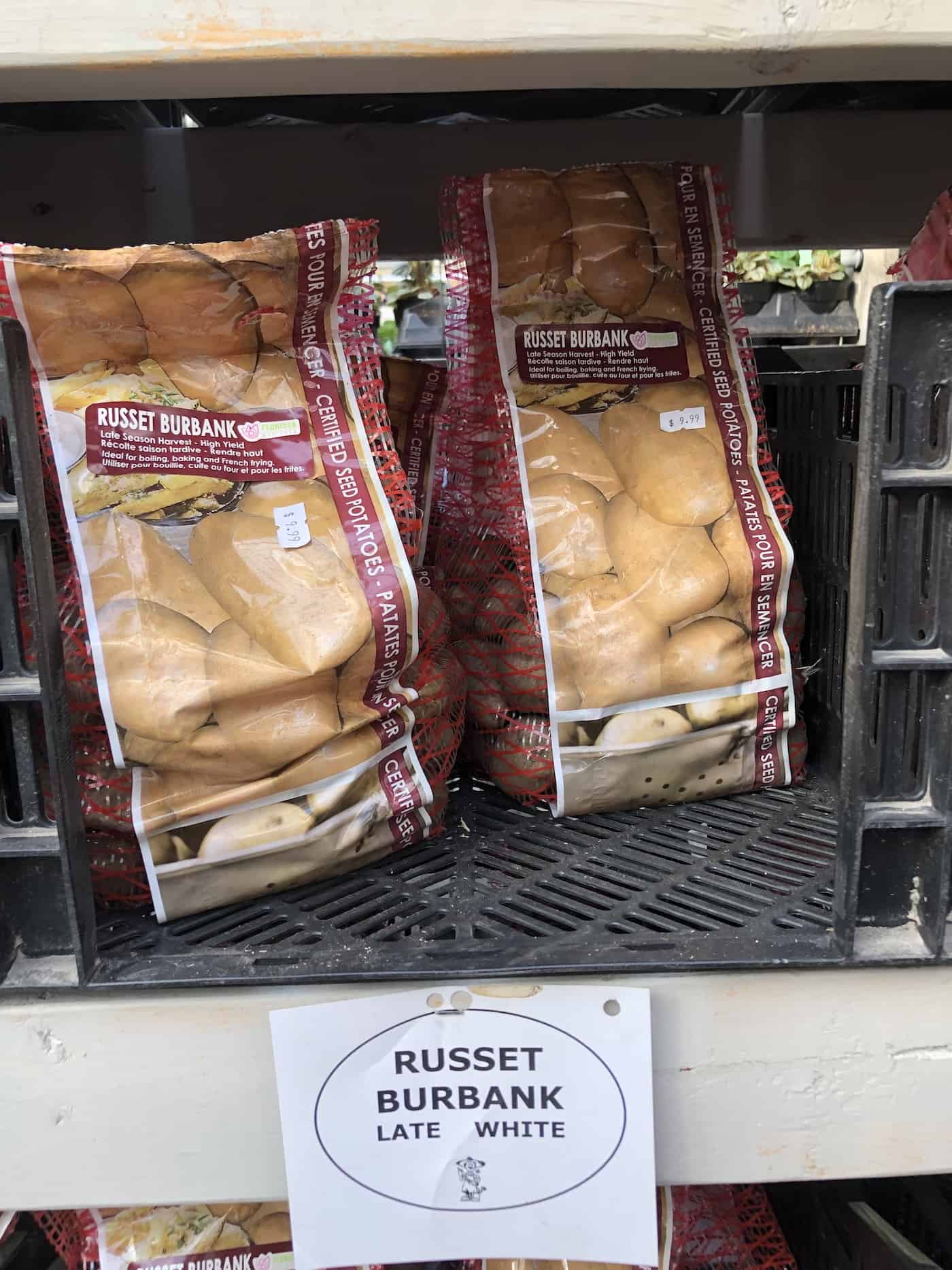
When to plant Russet potatoes
Potatoes may be started in early to mid-spring, as they withstand cool soil and light frost. Plant seed potatoes when the ground has warmed up to at least 45 degrees Fahrenheit (7 degrees Celsius). This is generally in March in southern regions, or April or May in colder climes with subzero winters.
Where to plant Russet potatoes
Potato plants like Russet grow best when grown in full-sun locations that receive a minimum of 6-8 of direct sunlight each day. They also prefer loose, well-drained soils with a slightly acidic pH between 5.0 and 6.5. Lastly, avoid planting potatoes where other nightshades like tomatoes, peppers, or eggplant were grown the previous year to minimize disease problems.
Work organic material, such as compost or manure, into your planting area to assist improve drainage and supply nutrients. If your soil is extremely heavy or rich in clay, consider planting your potatoes in raised beds or potato grow bags.
Planting Russet seed potatoes
Once your seed potatoes have dried out and the soil is warm, they are ready to be planted. Plant them in a sunny spot with well-draining soil.
- Dig trenches or individual holes that are about 6 inches deep and 6 inches wide. Alternatively, use a potato grow bag.
- Place your cut pieces of seed potato into the planting hole or trench with the eyes facing up.
- Space the seed potato pieces about 12″-18″ apart for new potatoes and more like 24″-30″ apart for larger midseason potatoes.
- Cover the seed potatoes with about 2-3 inches of soil.
- Water thoroughly after planting.
Growing Russet potatoes
After planting your seed potatoes, you’ll need to wait for them to germinate. This generally takes around 2-3 weeks. Cover the potato plant sprouts overnight if there is a danger of frost in the forecast.
Add soil to the planting hole when the sprouts reach 5″-6″ tall. Keep adding soil around the plant to “hill them up”. Potato plants are usually “hilled” about every 2 weeks. Try to leave about 2″ of potato plant foliage above the soil line whenever hilling them. Hilling helps with weed control, plant support, and frost protection, as well as keeping potatoes out of the light, which will cause them to turn green and become inedible.
Water the soil thoroughly and continue to water as needed throughout the season to ensure that there is enough water for potato growth. They require 1-2 inches of water each week, more in hot, dry conditions. When tubers are growing (around bloom time), uneven growth caused by intervals of drought reduces yield and can result in ruined potatoes.
Keep weeds at bay during the growing season (usually 3-4 months). Weeds compete for water, space, and nutrients with plants, so keep them at bay by cultivating or using a mulch to prevent their seeds from germinating.
Water with drip irrigation or a soaker hose if possible to keep excess moisture off the leaves. If you water with overhead sprinklers, make sure you water early in the day so the leaves have time to dry before nightfall to reduce disease risks.
In nutrient-deficient soils, additional side applications of fertilizer may be required when the plants are approximately 12 inches tall and flowers first begin to appear.
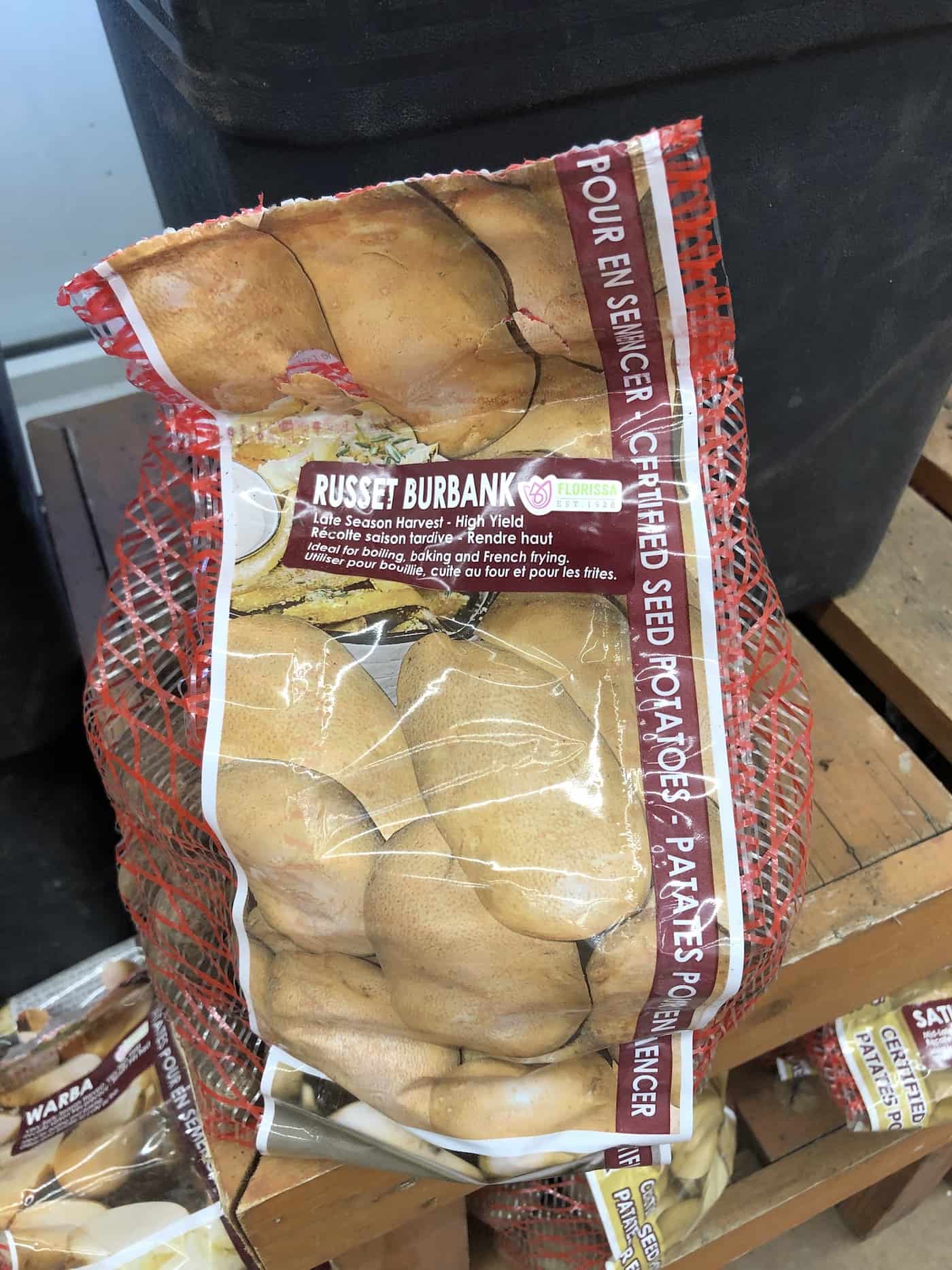
Companion plants for potatoes
Potato plants such as Russet have a wide range of compatible companion planting choices. To keep the soil moist and shaded, plant smaller plants like basil, nasturtium, onions, and salad greens between the potato plants and on the sides of the hills.
Read more about companion plants for potatoes here.
Garden pests affecting Russet potatoes
Aphids, potato beetles, leafhoppers, cutworms, potato cyst eelworms, root-knot nematodes, slugs, and wireworms are some of the most common potato pests.
Keep an eye out for indications of harm to the plant, such as holes in the leaves, damaged stems, or missing new potatoes. Also, look for clumps of eggs on the undersides of the leaves.
Potato beetles, aphids, and leafhoppers can all be kept off your plants by using row covers with insect netting. If you detect larvae/worms, apply an organic pesticide to the plant. Slugs may be caught at night with a flashlight or collected in beer traps. Aphids can be washed away with water or insecticidal soap can be used to destroy them.
Plant diseases affecting Russet potatoes
Potato plant diseases include potato scabs, gray mold (botrytis), blackleg, blight, verticillium wilt, and powdery scab. Bacterial and fungal sprays are generally sufficient for controlling the majority of bacterial and fungal infections. Disease problems can be minimized when potatoes are grown in full light with good air circulation and watered and fertilized on a regular basis.
Harvesting Russet potatoes
Russet potatoes are typically ready to harvest after about 105 days, although the time to maturity varies between different varieties of russet-type potatoes. You can harvest small “new” potatoes about 70 days (10 weeks) after planting, or when the plants start to flower.
To harvest new potatoes, use a trowel to gently dig into the top layer of soil and unearth the potatoes. Take only a handful from each plant if you plan on harvesting full-size Russet potatoes later in the season. Try not to disturb the rest of the plant. Replace the soil after harvesting and water the plant.
Full size potatoes are generally ready to harvest when the flowers are dropping off the plant and at least 50% of the potato vines have died off. To harvest mature Russet potatoes, simply dig down into the soil with a garden fork and remove them from the ground. Lift and turn the soil carefully to avoid damaging the tubers as you pick them out of the earth. Brush off excess soil.
If storing the potatoes, leave them out in the sun for 1-4 hours and then brush off the dirt prior to bringing them indoors for storage. After harvesting, place them in a dark, dry location for a week at 65-70 degrees F to dry out a bit. After that, store potatoes in a cool dark location (like a root cellar) at about 35-40 degrees F. Potatoes may also store better if you wait to harvest until 2-3 weeks after the plants die back in the fall.
Recipes for cooking Russet potatoes
Now that you have harvested your Russet potatoes, it’s time to put them to use!
These potatoes are great for making French fries, baked potatoes, or mashed potatoes. Other delicious potato dishes that you can try include russet potato wedges, russet potato pancakes, russet roasted potatoes, russet hash browns, russet tater tots, russet potato croquettes with bacon, russet sweet potatoes au gratin, russet potato curry, or russet potato salad. Simply sauté your russets in some oil with chopped onion and garlic for a quick and easy side dish.
Quick tip: Russet roasted potatoes pair excellently with olive oil and sea salt for a crispy and savory treat.
Russet baked potatoes
One of the simplest ways to enjoy russet potatoes is to bake them. Preheat your oven to 400 degrees F. Scrub the potatoes clean and then poke a few holes in them with a fork. Rub the potatoes with olive oil or butter and then sprinkle with salt. Place on a baking sheet and bake for 45-60 minutes, or until the potatoes are tender when pierced with a fork. Serve warm with your favorite toppings, such as sour cream, shredded cheese, green onions, or bacon bits.
Russet mashed potatoes
Mashed potatoes are another classic way to enjoy russet potatoes. Start by boiling the potatoes in water for 15-20 minutes, or until they are fork-tender. Do not overcook them or they will become mushy. Drain the potatoes and then add them back into the pot. Add in some milk, butter, salt, and pepper, and mash until you reach your desired consistency. If you want extra flavor, try adding some grated cheese, garlic, or crumbled bacon to the potatoes as well. Serve warm for a delicious side dish that is perfect for any meal!
Russet potato french fries
Who doesn’t love French fries? Russet potatoes are the perfect type of potato to use for this classic dish. Start by cutting the potatoes into thin strips. Soak the potato strips in cold water for at least 30 minutes or up to overnight. This will help to remove some of the starch from the potatoes so that they will be nice and crispy when fried.
After the potatoes have soaked, drain them and pat them dry with a paper towel. Preheat your oil to 350 degrees F. Fry the potato strips in batches for 3-5 minutes or until they are golden brown and crispy. Drain on a paper towel-lined plate and sprinkle with salt. Serve hot with ketchup, mayo, or your other favorite dipping sauce.


